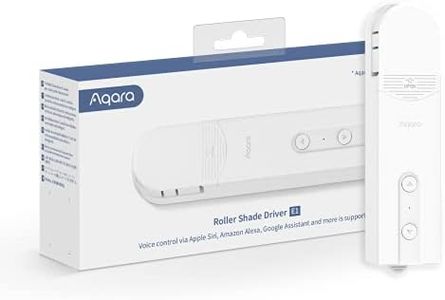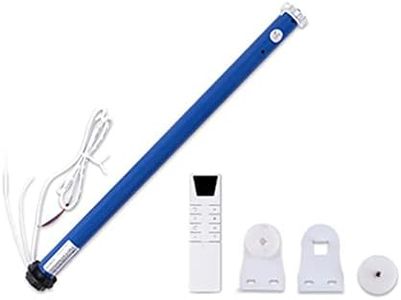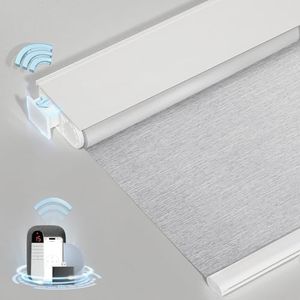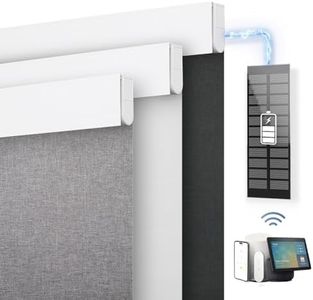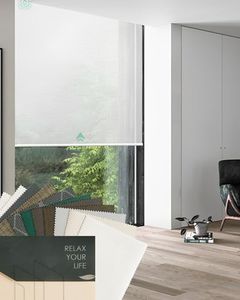We Use CookiesWe use cookies to enhance the security, performance,
functionality and for analytical and promotional activities. By continuing to browse this site you
are agreeing to our privacy policy
9 Best Smart Blinds
From leading brands and best sellers available on the web.Buying Guide for the Best Smart Blinds
Smart blinds are window coverings that can be controlled automatically using a remote, smartphone app, or even your voice through a smart home system. Choosing the right smart blinds can make your home more comfortable, energy-efficient, and convenient. Before you buy, it's important to understand what features matter most to you, depending on your space, lifestyle, and how much tech you want to integrate into your daily routine.Control OptionsControl options refer to how you interact with your smart blinds – for instance, via remote controls, mobile apps, wall switches, or through voice commands using smart assistants. This is important because your preferred method of controlling the blinds will affect your day-to-day experience and convenience. Some people like simple remotes, while others prefer full integration with smart home devices. When picking, think about how tech-savvy you are, whether you already use smart home devices, and if you want to control your blinds from afar. If you like straightforward options, remotes or wall switches are great; if you enjoy automation or use a lot of other smart gadgets, choose blinds that work with mobile apps or voice assistants.
Power SourceSmart blinds need power to move up and down. The main options are battery-operated, plug-in (wired), or solar-powered. This spec is important because it affects where you can install the blinds and how often you'll need to maintain them. Battery-powered blinds are easier to install and good for places without outlets, but the batteries will need to be recharged or replaced from time to time. Wired blinds don’t need battery changes but require an outlet or electrical setup, which might not be possible in every location. Solar-powered blinds are eco-friendly and reduce maintenance, but they need enough sunlight to work well. Consider how your windows are positioned and how much you want to deal with changing batteries or handling wires.
Connectivity and CompatibilityThis spec describes how the blinds connect to your smart home system or other devices, such as Wi-Fi, Bluetooth, Zigbee, or proprietary connections. It’s important because not all smart blinds work with every smart home platform, and good connectivity means more reliable performance and better features. If you already have a smart home setup (like Alexa, Google Home, or Apple HomeKit), choose blinds that support those systems and communication methods. If you’re just starting out or prefer less technical setups, simpler connectivity like Bluetooth might be enough.
Installation and Size CustomizationThe installation process and the ability to customize the size of your blinds matter because every window is different, and not all blinds fit every window out of the box. Some smart blinds are easy to install by yourself, while others may need professional installation. Blinds that offer more size customization ensure a better fit and better look. If you’re comfortable with DIY tasks, you might prefer models that are designed for easy self-installation; if your windows are non-standard sizes, check for made-to-measure options.
Material and Light ControlThe material of smart blinds affects how much light and privacy you get, as well as the overall look and durability. Choices typically include fabric, wood, and synthetic materials in different thicknesses and finishes. Some let in a lot of natural light for a softer effect, while others block out light almost completely (blackout). This spec is important for comfort: if you need to darken a bedroom, blackout blinds are best; for a living room or kitchen, lighter materials might be more appropriate. Your choice should depend on how much sunlight you want, your privacy needs, and your decorating style.
Automation and SchedulingThis refers to the ability of the blinds to open or close on a schedule or in response to triggers like sunrise, sunset, or temperature changes. Automation adds convenience, energy savings, and security, since blinds can make it look like someone is home even when you're away. If you want your home to run itself as much as possible, pick blinds with advanced scheduling and automation features. If you prefer to stay in control yourself, simpler manual or remote-operation models may be ideal.

